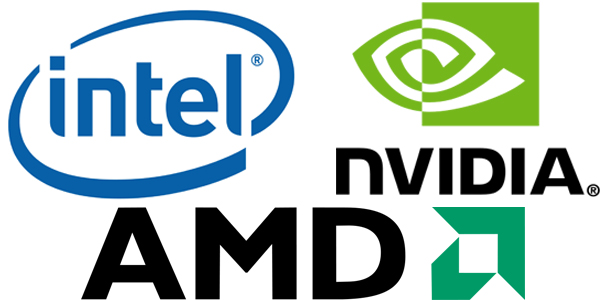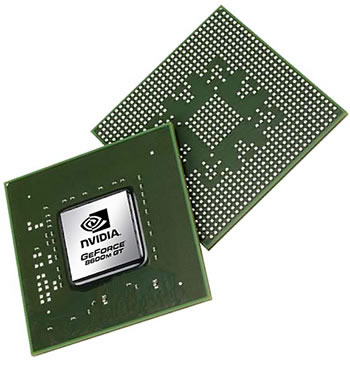CUDA Application Support: In order to run Mac OS X Applications that leverage the CUDA architecture of certain NVIDIA graphics cards, users will need to download and install the CUDA 5.x driver for Mac located New in Release 304.00.05f02:. Contains performance improvements and bug fixes for a wide range of applications. Release Notes Archive:. This driver update is for Mac Pro 5,1 (2010), Mac Pro 4,1 (2009) and Mac Pro 3,1 (2008) users only.
If you would like to be notified of upcoming drivers for Mac OS X, please subscribe to the. Supported Language. Chinese(simplified). Chinese (traditional). English. French.
German. Italian.
Nvidia Mac Drivers
Japanese. Korean. Russian. Spanish. MINIMUM SYSTEM REQUIREMENTS for Driver Release 304.00.05f02. Model identifier should be MacPro3,1 (2008), MacPro4,1 (2009), MacPro5,1 (2010) or later.
Mac OS X v10.8.2 To download and install the drivers, follow the steps below: STEP 1: Make sure your Mac OS X software version is v10.8.2. It is important that you check this first before you install the 304.00.05f02 Driver. Click on the Apple icon (upper left corner of the screen) and select About This Mac. STEP 2: In the About This Mac window, click on the Software Update button STEP 3: Continue to install software updates until your system OS is reported to be v10.8.2 STEP 4: Review the.

Check terms and conditions checkbox to allow driver download. You will need to accept this license prior to downloading any files. STEP 5: Download the Driver File Download - STEP 6: Install After downloading the disk image, it should automatically mount and launch the installer.
If it does not, double-click on the disk image and again on the driver package within. It will guide you through the installation process. Click Continue after you read the License Agreement and then click Agree STEP 7: Click Install on the Standard Installer screen. You will be required to enter an Administrator password to continue STEP 8: Click Continue Installation on the Warning screen:The Warning screen lets you know that you will need to restart your system once the installation process is complete. STEP 9: Click Restart on the Installation Completed Successfully screen. To uninstall this driver and restore your original Mac OS X v10.8.2 driver, follow the steps below: STEP 1: During the installation process, a backup archive of your current drivers will be created. If for any reason you need to uninstall the 304.00.05f02 driver, the “NVIDIA Driver Restore.mpkg” is located in /Library/Application Support/NVIDIA.
IMPORTANT: Do not move this package from its default location. Doing so will invalidate the uninstall/restore process.
Also, this process is only valid with Mac OS X v10.8.2. Installing any newer version of the OS over this driver will also invalidate the uninstall/restore process.
STEP 2: After locating the NVIDIA Driver Restore.mpkg archive, double-click on the package. You will be guided through the driver restoration process. Click Continue after you read the Welcome screen. STEP 3: Click Install on the Standard Installer screen. You will be required to enter an Administrator password to continue. STEP 4: Click Continue Installation on the Warning screen: The Warning screen lets you know that you will need to restart your system once the installation process is complete.
STEP 5: Click Restart on the Installation Completed Successfully screen. ALTERNATE METHOD – If for any reason you are unable to boot your system to the desktop and wish to restore your original Mac OS X v10.8.2 driver, you can also do so from “Single-User” mode: STEP 1: Restart your Macintosh computer and hold down the “Command” (apple) key and the “s” key to boot into “Single User” mode. STEP 2: When the system finishes loading to a command prompt, type the command “NVIDIARecovery” (no quotation marks), and hit the “Return” key. STEP 3: The 304.00.05f02 driver will be uninstalled and your original Mac OS X v10.8.2 driver will be restored. The computer will then reboot automatically.
Is without a doubt the most useful site around for anyone who wants to build a Hackintosh. The site is chock full of useful tools that will help speed up the process of building your dream Hackintosh.
But what happens when a writer decides to forego the tools at tonymacx86 and wing it when building a Hackintosh? Jeff Benjamin reports for 9to5Mac: Beware the and see why these.
In a previous article, posted shortly after Nvidia announced its new Pascal Mac drivers, I briefly discussed my plans to build a new Hackintosh. I’ve been planning and working on the machine for over a week, and I’m finally at the point where I can share the results of my journey. This isn’t my first Hackintosh build, but it’s the first build where I decided to go about it without the assistance of the excellent tools over at tonymacx86.
I’ve been long interested in building a Hackintosh using just the Clover EFI Bootloader, and that’s exactly what I did for this build. Going about it this way allowed me to learn more about the process, and helped me to see that the entire premise, while tedious at times, is actually fairly straightforward. In this initial post, I’ll talk about some of my reasoning behind my hardware choices, and share some initial experiences and benchmark results.this Hackintosh is faster than any Mac that Apple currently sells in some respects, with single core CPU scores besting the 2015 iMac with similarly-equipped 4 GHz Intel 6700K i7 processors, and multi-core scores besting every Mac outside of a handful of 12- and 8-core Mac Pros.
Needless to say, I’m satisfied with this Hackintosh build. There are some things I’d like to change, such as introducing a faster NVMe boot drive (These SATA SSDs are slow by today’s standards) and adding more RAM, but those are largely trivial items. As you can tell from the article, Jeff did a great job putting together his Hackintosh on his own. And it clearly offered some significant performance boosts when compared to official Macs put out by Apple. The fact that he did it without making use of the tools from tonymacx86 is just icing on an already sweet cake. 9to5Mac readers shared their thoughts in the comments section about Jeff’s Hackintosh, and some expressed serious skepticism about the benefits of building a Hackintosh: User3468: “I've always found Hackintoshs to be not worth the hassle, but that's just my opinion and if you can live with it who am I to judge.” Sahil Malik: “I agree.
See all known issues in NVivo for Mac (Version 11). We use cookies to improve your experience on our website. By clicking OK or by continuing to browse the website, you consent to their use. Nvivo pro 11.
The stability isn't there, and to get iMessage and App store and app submission working is a hassle, and it can break anytime with an update.” Brandon Coppin: “LOL definitely worth the hassle. I built a machine that would have cost me nearly $4,000 for only $1,200 that is also easily upgradable.” RCC: “Why bother? It's practically the same performance as non-overclocked iMac. But it's illegal and iMessage doesn't work.” Brandon Coppin: “The iMac does not even come close to this. And it is not illegal. The only thing that would be Illegal would be to sell them. And yes, actually iMessage does work.
Do your homework.” Pascal G: “CPU performance, sure, but GPU is not comparable to an iMac at all. Also note that the iMac used for comparison is the top-end one, 5K with all BTO options. That computer is $4k and building a hackintosh of equivalent performance, including a 5K display, is around half that price.
IMessage does work if you set it up, which takes around 5 minutes using Clover Configurator. I can understand hackintoshes aren't for everybody, but let's not act like an iMac is equivalent and that there aren't gaps in Apple's current lineup making hackintoshes attractive for a niche of users over real Macs.” Wigby: “I still don't understand the core professional argument for hackintoshes in the first place. If it's a hobby or educational, then that's fine but pros will argue that hackintoshes somehow fit their workflow. Meanwhile, there are so many caveats and support issues, I don't understand how anyone can reconcile those as a professional with clients. When you make money using your computer, saving a few thousand dollars shouldn't even be a factor unless it's so much faster that you can justify possible downtime with the overall speed increase.” Pascal G: “I agree that a hackintosh is not a viable option as a professional computer if your job depends on it. The tinkering part should be a hobby for you, something you do for fun in your spare time.
If you count the set up / maintenance / troubleshooting as work hours, then a hackintosh is likely not a cost-effective solution, and reliability issues could get you in trouble if you work on any project that's minimally time-sensitive. I'm really not defending hackintoshes for use in a work environment, they're a cool project to leave at home IMO.” 1stNTenderbits: “Dig what you're doing Jeff. The DIYer and tinkerers spirit is still alive.
Nvidia Driver Manager Mac
Nice build.” Eric Stanfield: “Ran a hackintosh for about 18 months after giving up on Apple ever coming out with anything close to the specs I could build myself at a fraction of what they would charge. Ultimately I retired the thing because every single OSX update would break cloud related apps like iMessages and you'd basically be s.o.l. Until someone 'out there' came out with a patch or complicated set of hacks to restore the functionality. I don't know if that's been addressed, but considering how much of Apple's ecosystem is dependent on icloud it really sucked at the time.” Overpriced and underpowered Macs are why people build Hackintosh computers The fact that people like Jeff are building Hackintoshes at all does not speak well of Apple’s treatment of the Mac in recent years. To put it bluntly, the company has screwed up royally by not providing more powerful Macs at more reasonable prices.
With the design of the trash can and promised that a new Mac Pro is being worked on, and also noted that a pro version of the iMac is on the way. However, this mea culpa is really too little and far too late.
Apple’s obsession with “thin and cool” led it to some disastrous design decisions for the 2013 Mac Pro. The neglect of the Mac mini, and unpredictable updates to the iMac also helped give the company a black eye with Mac users. Thus the Hackintosh was born and it has become an important option for those who wish to use macOS as their operating system but who cannot live with Apple’s substandard Mac hardware. Can Apple be trusted to update the Mac regularly?
Tonymacx86 Blog: Updated Nvidia Drivers For Mac Free
Despite Apple’s stated plans to release an all-new Mac Pro, and to update the iMac with pro level hardware, the company still faces a great deal of skepticism from some Mac users. Even if Apple releases great new hardware, will it keep those Macs updated regularly? Nobody knows. Apple’s unreliability when it comes to Mac hardware updates means that folks like Jeff will probably still be building Hackintoshes, even after a new Mac Pro comes out. Apple abused its monopoly on Mac hardware, and the end result was that some users gave up on Apple's official Macs and built their own. Releasing new Mac hardware will be easy for Apple, but regaining its reputation among Mac users will be much more difficult.

Hackintoshes aren't going away any time soon. The process of building one is getting easier and easier, as you can tell from Jeff's experience.
Apple should be worried. Did you miss a post? Check the to get caught up with the latest news, discussions and rumors about Apple. This article is published as part of the IDG Contributor Network.